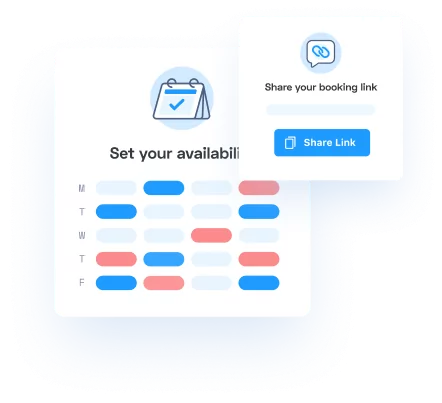A sales quota should be realistic. It’s best achieved through incremental stages, starting with smaller targets. And if the smaller ones intimidate your team, break them down even further until your goals are almost impossible to miss. Once you nail the small targets, your reps will have more confidence reaching for bigger opportunities.
At most companies, the sales team grinds day in and day out to meet their goals. It can be difficult to keep up with the numbers they need to hit. Most sales reps are working on commission. So it’s not uncommon that sales reps end up competing with each other. That doesn’t make for a very fun work environment.
It’s not that difficult to keep the toxicity out of your employee relationships and still motivate them to reach for big targets. You just need to give them realistic quotas and incentives for high performance. Similarly, to boost overall morale and motivation, you can add Google reviews on your website to showcase customer satisfaction, reinforcing a positive and supportive atmosphere both internally and externally.
In this article we’ll cover the basics of what a sales quota is and how to decide which would be best for your company. But before we jump into that, here’s a pro tip. If your team plans to get on calls and run sales demos all day long, we highly recommend setting up an online scheduling tool. This will ensure that it takes zero effort for qualified leads to meet with your reps and learn more about the company.
For additional ideas on how to maximize your email engagement for sales, check out this article we published on increasing your clickthrough rate.
Alright, now that we’ve got that out of the way, let’s focus in on what a sales quota really is.
What is a Sales Quota?
A sales quota is a time-bound sales target set by management. It could be held for individual reps, teams, or even geographic regions on a monthly, quarterly, and annual basis. Typically the targets are measured in dollars or number of products/services sold. For seasonal events, Black Friday marketing campaigns can significantly influence these targets by leveraging limited-time offers and promotional tactics. This can be for a normal period or for a high volume sales period like Black Friday or other holidays.
Sales goals and quotas are both oriented toward the market, but they operate on different scales. Goals usually relate to significant company objectives, while quotas are smaller wins that help the company meet these goals. Sales activities are built around meeting quotas, and those quotas help the team reach their goals.
Let’s say that Apple was rolling out a new version of their iPhone and setting a company-wide goal to increase revenue by 25% within a year. The sales leadership would identify how many deals need to be closed to achieve this goal and divide that into smaller periods, say per quarter. The value or quantity of deals required from each salesperson represents the individual’s sales quota.
The Importance of Setting Sales Quotas
Sales quotas can be a powerful technique to drive sales when used under the right conditions. They help keep the sales force motivated, providing clarity and direction ahead of time. These quotas provide the foundation for a fair sales compensation plan that rewards the hardest workers.
Sales managers forecast their sales or manage rep activities based on the numbers that they expect to hit. They can track the productivity, success rate, and communications on their team to help make it a good work environment. When quotas are challenging but realistic, they give sales reps a much needed push to meet the business’s goals.
Understanding Different Types of Sales Quotas
Traditionally, the sales quota was based on simple metrics like the number of sales made or the total dollars generated. As sales automation platforms have improved over the past decade, quotas have become more nuanced and based on multiple variables. Here are six of the most common types of sales quotas found in today’s business world.
Activity Quotas
An activity quota assigns sales targets in the form of the number of sales activities to be completed. These activities could include cold calls, emails, meetings, product demos, and a lot more.
Volume Quotas
Volume-based quotas are defined on the volume of inventory moved or the number of units sold to the consumers. The definition of volume changes from industry to industry, but the general idea remains the same.
Forecast Quotas
A forecast quota is based on how the past performance of the product or service has been in a specific sales territory. Forecasts are made with very little change to the variables involved, and then the predicted number is set as the quota for the future.
Revenue Quotas
These are the most common type of sales quota. Revenue quotas are set based on the dollar revenue generated through the sale of goods. Such quotas can be instrumental when there isn’t much focus on the margins, and the pricing is mostly flexible.
Profit Quotas
Profit quotas simply base the calculations on profits instead of revenues. The sales team is expected to reach a certain level of gross profit or margins from the sales they make for quota attainment.
Combination Quotas
Combination quotas make things a bit more complex and involve more than one quota system. The quota, in this case, might be based on both revenue and activity, or a mix of any other quota types for that matter.
How to choose the right type of sales quota for your team?
There are no hard and fast rules when it comes to selecting the best type of quota for your team. Ultimately it comes down to figuring out what industry you’re operating in and what your long term business goals are.
The quota you choose will eventually impact your team’s performance and the results they deliver. It’s important to think carefully through all of the options and formulate a theory for why one option will work best for you.
Activity Quotas
Activity Quotas are best for sales reps who are a part of a larger team and are not mainly responsible for closing final deals. This type of quota ensures that they are putting in the effort required to get the outreach you are aiming for, and that the next link in the sales pipeline has enough warm leads to convert.
Consider using activity-based quotas when the sales cycle is long or involves multiple customer touchpoints. This shifts undue pressure from the closers and makes the rest of the sales team equally accountable.
Volume Quotas
Volume-based quotas are common in businesses where the sales cycle is shorter, and the pricing is mostly fixed. In such businesses, the salespeople can move larger numbers in a shorter time, and it doesn’t hurt to judge their efforts solely on the basis of these numbers.
You may also consider applying this method if your main focus is increasing your gross figures or the top-line. However, you will need to be extremely careful how you break down the quota, i.e., by region, product, or individual sales reps. Otherwise, the figures might be very hard to track.
Forecast Quotas
Using a forecast quota makes sense if your business takes a data-driven approach to decision making. If your sales forecasts take variables into account like seasonality or incremental/decremental factors, you will be able to set a realistic quota that motivates your team to do their best and awards them for their honest efforts.
You might forecast higher sales during the holidays and adjust your numbers accordingly. But if the prediction is inaccurate, you run the risk of demotivating your team with unrealistic quotas. This could lead to a decline in sales and ultimately the bottom-line of the business.
Revenue Quotas
Revenue quotas are common with businesses large and small. Companies with longer sales cycles typically base their revenue quotas on annual periods, while teams with shorter cycles work on a monthly or quarterly basis.
This type of quota is useful when the price of your product or service is flexible, meaning the salespeople can give discounts and play with the margins. You may also set net revenue quotas, when there is a lot of upselling involved in the sales process. Either way, this can be a great way of achieving your revenue goals.
Profit Quotas
When you sell products or services with a range of profit margins, it makes more sense to base your quotas on profit instead of revenue. Profit quotas encourage sales teams to put more effort into selling products with higher margins.
This strategy also helps businesses improve their bottom-line since the sales team is encouraged to push products with higher profits, irrespective of the total revenue generated. Additionally, this discourages discounting strategies used by some sales reps that may be bad for the overall brand in the long run.
Combination Quotas
Combination quotas are the most tricky to set but can do wonders for your sales if used correctly. A combination strategy shows the sales team a pathway to success by providing them with smaller milestones that make the targets look more achievable.
This method works best for businesses working with longer sales cycles and multidisciplinary sales teams. Here, the salespeople have multiple roles to play, such as prospecting or closing deals. In such cases, the quota may include an activity-based milestone such as making X number of sales calls per month, and then the revenue generated from those phone calls could be tracked via a revenue-based quota.
One problem that often occurs with combination quotas is that the team is unable to track sales results and loses focus. Reps find it hard to prioritize all parts of the funnel equally, and as a result, the whole process gets affected. Thus, combination quotas are only recommended where they are absolutely necessary. Otherwise, it is better to stick with a single quota type to keep things simple for the team.
How to Set Sales Quotas
With so many options, it can be challenging to decide which sales quota to aim for or how to actually run the operations. The most common methods are known as the top-down and bottom-up approach.
Top-Down Approach
In this approach, the company’s objectives dictate the sales volume that needs to be reached in a set amount of time. This volume is then split into quotas for each sales rep. The main benefit here is that the company is able to push sales reps to their limits and get closer to its own goals. However, the down side is that this often leads to setting unrealistic quotas that keep getting higher with time. The sales team loses motivation eventually and may stop putting in as much effort.
Bottom-Up Approach
The bottom-up approach is more aligned with what your sales team is capable of doing and what it has achieved in the last years. The upper limits of what they’ve previously achieved will be used to set the quota. Quotas built around these existing metrics are more realistic and achievable but rarely push the sales reps out of their comfort zone. The growth tends to get stagnant, and it gets difficult to expand.
You can also check out this guide by Hubspot or this one by Propeller CRM to get more insights into setting sales quotas effectively.
Identifying Key Metrics
Reading through this initial information about sales quotas may have made it seem easy enough to manage. But when you actually sit down and start structuring your quotas, it’s easy to get lost in all the details. CRM software can help a lot because they help track specific data and create sales-related dashboards where you can make more informed decisions.
Aside from the normal metrics tracked in most CRMs, here are a few additional ones that sales managers often overlook while setting quotas.
- Rate of activities – This is simply the number of activities performed over a specific period of time.
- Rate of follow-up activities – Follow up activities are the ones that are performed after the initial interaction. These are the activities that actually bring in more qualified leads and new business opportunities.
- Number of open opportunities – It is essential to track how many open opportunities are available to your sales reps before setting their quotas. The quota will be naturally very unrealistic if there is a mismatch between the two.
- Conversion rates – This is the ratio of converted leads to pursued leads. This metric can help measure the effectiveness of the sales pitch of a rep.
Frequently asked questions
Sales quotas are important metrics that have a serious impact on how your sales team performs over the years. These quotas can literally make or break your sales pipeline. Here are some of the most frequently asked questions about sales quotas, answered for easy reference.
What is the purpose of a sales quota?
A sales quota is designed to help team members achieve a shared sales goal. It defines measurable (and hopefully attainable) subsets of your primary goal, to help keep sales reps are on their toes. People tend to perform best when they are given reasonable targets with appropriate incentives.
How do you determine sales quota?
Sales quota can be determined either by a top-down approach or a bottom-up approach. Top-down sales quotas set the company’s target sales for a specific period are divided into smaller parts, assigned as quotas to individual reps. Bottom-up approach is oriented toward past sales performance of the team and assigns quotas that attempt to grow from that prior baseline.
What is a sales quota and its types?
A sales quota is simply a time-bound sales target set for a particular region, sales team or an individual rep by the management. There are six common types of sales quota; activity quota, volume quota, revenue quota, profit quota, forecast quota, and combination quota.
How is sales quota determined?
Sales goals are defined by management and disseminated as a series of guidelines for sales representatives. Companies that need to shoot for the moon and hit an ambitious goal will use a top-down approach, meaning that sales reps need to be well equipped to rise to the challenge. Stable companies who want to see some percentage in growth are more likely to encourage a bottom-up strategy instead.
Which type of measurement is sales quota?
A sales quota is a quantitative measure for the number of sales that need to be generated or the number of sales-related activities that need to be performed by the sales team in a particular period. Sales quotas help assign measurable and attainable sales goals to reps so that they can work with a clear direction in mind.
What is the difference between quota and sales quota?
The word quota is defined simply as a fixed quantity of something allotted to someone. So the phrase “sales quota” refers to assigning a target sales quantity to each sales rep, with the expectation that it will be achieved in a certain amount of time. Sales quotas help give the team a clear target and drive maximum sales for the business.
How does a sales quota help a company?
Sales quotas are an excellent tool for sales management. They help forecast and monitor the activities of sales reps and then reward them accordingly. Besides, they allow companies to push their sales teams to do their best and helps drive maximum sales.
What are the limitations of sales quotas?
The main limitation of sales quota is the constant compromise that needs to be made between what the company wants to achieve and what the sales team is realistically capable of doing. Putting too much focus on either one can have a negative impact, so it’s important to pick the right sales quota.
Measurable & Attainable – the only two characteristics of an ideal sales quota
At the end of the day, salespeople are also humans, putting in all their efforts to help your business reach new heights. Make sure you don’t overburden your reps with unrealistic quotas and rightly reward them for their efforts. Do so and you will surely see them bring in new customers every day.
Let us know if our comprehensive guide on sales quotas actually helped you set yours. Drop a comment below so we know.

Ezra Sandzer-Bell
Ezra is a SaaS product marketing manager and the founder of AudioCipher, a music software company. He previously worked at Appointlet as a customer success manager and marketer, helping business managers optimize their online scheduling workflows.

